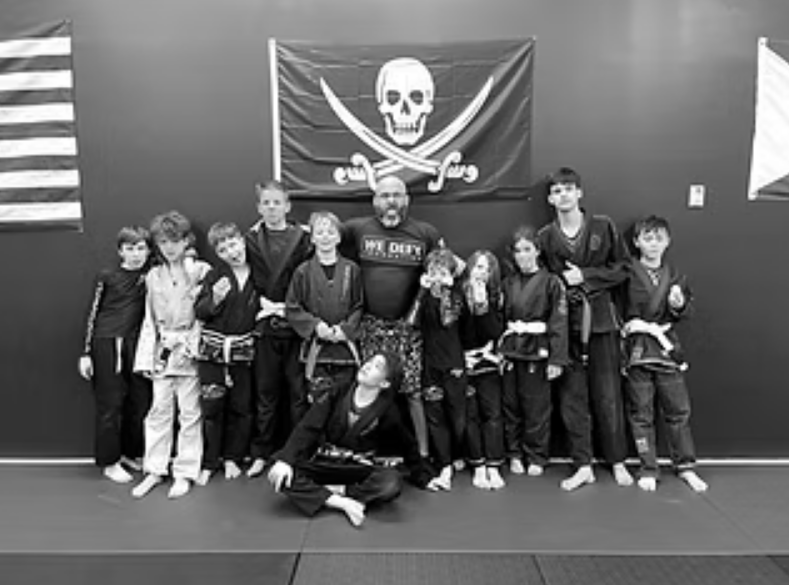How to Choose the Right Jiu Jitsu Gym for You

Define your goals & priorities
Before you even step foot on a gym’s mats, you must know why you want to train. The clearer your goals, the sharper your filter will be when comparing gyms.
Common goal types
Some of the most frequent motivations include:
-
Fitness & health — you want to get in shape, build strength, flexibility, cardio, etc.
-
Self-defense — you want practical techniques applicable outside sport contexts.
-
Competition — you aim to prepare for tournaments, win medals, test yourself.
-
Social / community — you want camaraderie, regular training partners, social environment.
-
Cross-training — you already do wrestling, Muay Thai, or other martial arts and want BJJ to complement.
Actionable prompts to define your priorities
-
Ask yourself: “Do I intend to compete in the next 12 months?”
-
“How many days per week can I realistically train?”
-
“Is self-defense or sport more important to me?”
-
“Do I want a heavy drilling and sparring environment, or a more gradual fundamentals focus?”
For example, consider two prototypical profiles:
-
Weekend hobbyist Alice, who can train 2× per week, wants fitness and technique, and is uncomfortable in high-pressure sparring.
-
Aspiring competitor Bob, who can train 5× per week, wants to compete and push hard, comfortable with tough sparring intensity.
Alice should favor gyms with structured fundamentals classes, gentle culture, and a patient pace. Bob should prioritize gyms offering competition programs, high-level sparring, and coach access.
Your goals will cast long shadows over every subsequent decision—so invest time here. If your priorities change later, you can reapply this same framework and change gyms if needed.
Instructor credibility & teaching style
A gym is nothing without the coaching behind it. Even world-class facilities fail if the instruction is weak or inconsistent. So, verifying instructor credibility and fit is nonnegotiable.
What to check
-
Lineage & credentials — does the lead instructor trace belt lineage (e.g. direct to well-known teachers)? BJJ lineage matters for legitimacy, safety, and technical integrity.
-
Competition record and experience — not absolutely necessary, but can hint at technical depth and exposure to high-level scenarios.
-
Teaching background — years coaching, belt-level coaching under guidance, developing newer students (not just champions).
-
Certifications / affiliations — some organizations standardize instructor training, though they aren’t flawless measures.
Teaching style matters
-
Some coaches teach via strict curriculum: white belt class, fundamentals syllabus, progressive techniques.
-
Others lean toward open, freestyle, spar-first systems where students dive into live training rapidly.
-
Some prefer verbal instruction, others favor demonstration + hands-on coaching styles.
-
The balance between lecture, drilling, and live rolling should align with your learning style.
How to test fit in a trial
Observe a beginner class: do instructors stop to correct technique, offer clear progressions, break down complexity, and manage safety? Are questions welcomed? Is there one-on-one attention? If the instructor rarely adjusts or ignores lower belts, that’s a red flag.
Example contrast: Gym A has structured white belt syllabus, repeating core techniques for months. Gym B expects everyone to mix and spar from day one. If you’re new, Gym A is safer and more predictable; Gym B may overwhelm.
Avoid gyms where instructors promote “pay to promote” schemes, where techniques taught are shallow, or where unsafe practice is tolerated.
Class structure, curriculum & progression
Knowing how classes are structured helps you see whether a gym supports systematic growth or merely episodic participation.
Typical class flow
A well-designed BJJ class often looks like:
-
Warm-up / mobility / movement drills
-
Technique teaching + partner drilling
-
Positional sparring or controlled live rolling
-
Open rolling / free sparring
-
Stretch / cooldown or Q&A
A gym that cuts corners—skips mobility, rushes warm-up, jumps immediately to sparring—often signals neglect of fundamentals and safety.
Curriculum & progression
-
The best gyms offer a beginner / fundamentals curriculum that repeats core techniques over months, layering depth gradually.
-
Promotions should follow transparent criteria (technique mastery, time in rank, competition or sparring benchmarks).
-
There should be foundation classes distinct from advanced/sparring classes, and clear paths for progression.
How to test consistency
Attend different class types (beginner, fundamentals, open mat). See if the gym repeats essential drills, whether there is variation or chaotic randomness, and whether class to class the levels are meaningful. If every class seems to be advanced-level instruction with no care for rank differences, it may not suit a beginner.
A gym that refuses to teach fundamentals or forces brand-new students into advanced sparring is often a mismatch for those seeking steady growth.
Culture, community & safety
Beyond technique and structure, culture and a safe environment often determine whether you stay long enough to improve. Culture is the invisible gym heartbeat.
What good culture looks like
-
Respectful interactions: seasoned students helping novices, no belittling or ego displays.
-
Mixed-rank training: belts of different levels train together in a supportive way.
-
Inclusivity: gender balance, age diversity, friendly newcomers, minimal clique behavior.
-
Emphasis on humility, discipline, and mutual growth.
-
Encouraging “tap early, tap often” ethic: safety is prioritized over ego.
Safety practices
-
Coaches actively monitor sparring, stop unsafe rolls, intervene when posture is bad or technique is risky.
-
Cleanliness and hygiene policies (clean mats, sanitizers, shoe rules).
-
Injury and tap policies (e.g., no shaming taps, push recovery).
-
No pressure to train while injured or sick.
Red flags
-
Bullying, rank intimidation, pressure to train through pain.
-
Poor mat hygiene with foul odors, visible dirt, unswept mats.
-
Instructors or high belts ignoring safety, letting dangerous rolling continue unchecked.
How to evaluate early
Observe a class, perhaps ask permission to just watch. Talk to existing students about how they feel, whether they’ve been hurt, whether culture forced them out. Scan gym social media for events, member highlights, and community vibe. The gym with the right culture feels like it has a personality—some are spartan and serious; others are fun and family-oriented; both can be good, but they must align with you.
Location, schedule & convenience
Even the most ideal gym is worthless if it’s too inconvenient to reach. Logistics often decide long-term consistency more than passion.
Proximity & commuting
Ideally, your gym is on or near your daily routes (home, work, school). Many people train more consistently if the gym is “on the way.” If your commute is excessive (more than 30–45 minutes one way in traffic), you'd have to be extremely motivated to sustain long term.
Class schedule
Check whether class times align with your availability: mornings, lunch, evenings, weekends? Are there multiple sessions per day? Does the gym offer open mat time? Are there backup options if you miss your regular class?
Operating hours and closure policies
Learn the hours, holiday closures, maintenance closures. Are there make-up policies or access to affiliate gyms? What’s the flexibility for your unpredictable schedule?
Parking, transit & practical ease
Is there safe parking, easy entry, public transport access? Does the gym require you to climb stairs with gear? These seemingly small friction points add up over time.
Practical tip: Use a 2–3 week trial period to test the commute and real-life time fit. See what times you actually can attend. In some cases, a slightly farther gym with more compatible times is better than a closer but inflexible one.
Cost, contracts & extras
Cost is often the “dealbreaker” factor, but the cheapest gym isn’t always the best value. You must analyze every cost and contract detail.
Typical pricing structure
-
Enrollment or registration fee
-
Monthly membership (often for unlimited classes)
-
Drop-in / day-pass fees
-
Gi/uniform or equipment cost
-
Competition team fees or seminar extras
-
Possible private lesson add-ons
Reference price ranges & averages
According to surveys, the average monthly cost for unlimited BJJ classes in many U.S. gyms was around $145/month in one sample of 70 gyms. Jiu Jitsu Thoughts Others report ranges of $161–$195 for full unlimited access. grappletactics.com Smaller local gyms sometimes charge lower ($50–100), while “renowned” gyms may charge $200–$250 or more. Elite Sports+1
Gyms often offer discounts for multi-month or annual plans.
Contract pitfalls and hidden costs
-
Long-term automatic renewals or lock-in contracts
-
Cancellation penalties or notice requirements
-
Hidden seminar fees or “mandatory team fees”
-
Extra charges for open mat or affiliate access
-
Gear requirement (paying for their gi or supplement gear)
Compare value, not just cost
A gym charging slightly more but with better coaching, more included classes, open mat, and free seminars can deliver higher ROI. Don’t just chase low price; aim for maximum value for your goals.
Facilities, equipment & cleanliness
The training environment physically shapes your experience—poor facilities can distract or even compromise safety.
What to inspect during a visit
-
Mats: are they well-maintained, thick enough, clean, no gaps or seams?
-
Ventilation / air quality: hot, poorly ventilated rooms lead to fatigue and hygiene issues.
-
Changing / shower rooms: are lockers provided? Are showers functional and clean?
-
Space / layout: is there enough room for movement, multiple classes, open mat?
-
Equipment: training dummies, strength gear, conditioning equipment, safety gear, first-aid kit.
Hygiene and cleanliness
Visible cleanliness is essential: clean mats, disinfectant sprays, sweeping, no foul mat odor. Gyms that allow shoes on mats or don’t clean mats nightly are red flags.
Sample inspection checklist
Before joining, bring a notepad and check: mat condition, ventilation, changing area, equipment availability, visible cleaning supplies, safety kit presence.
A gym that invests in high-quality facilities typically signals a serious, professional operation. If you find water leaks, broken showers, torn mats, or no space, your training may suffer long term.
Class mix: kids, adults, women-only & specialty classes
Your ideal gym should offer the class types and demographics that match your comfort zone and training ambition.
Types to look for
-
Adult fundamentals / technique classes
-
Advanced / sparring classes
-
Women-only classes (for comfort & community)
-
Kids / youth classes (if you have children)
-
Competition team / prep classes
-
Gi and no-gi options
-
Self-defense or seminar courses
Why demographics & class mix matter
If you’re a female beginner, a gym that offers women-only or beginner cohorts may make your integration easier. Parents may want a gym that also runs kids’ classes so families can train together. If your aim is competition, the presence of a structured competition class is key.
How to evaluate
Review the schedule, ask what percentage of classes are fundamentals vs advanced, ask about dropout rates, class sizes and whether beginners are grouped. Ask whether no-gi and gi are both supported.
Example: A parent named Sara might choose a gym offering 5–10 year old kids’ classes plus family discounts, allowing her and her child to train in the same academy but in different classes.
Choosing a gym with class variety allows you to adapt as your goals shift over time (e.g. moving from beginner to competitor).
Trial policies, observation & what to ask on a visit
The trial period is your chance to validate everything you read or heard. Use it wisely.
Typical trial structures
Gyms often offer:
-
Free introductory class or week
-
Paid trial “intro pack” (e.g. 3 classes)
-
Day-pass or drop-in
-
Money-back guarantees (rare)
Each has pros and cons: a full week offers deeper insight; a single drop-in may mislead.
Observation checklist
During your trial or visit, observe:
-
Instructor demeanor: do they teach, correct, or just roll?
-
Safety oversight in sparring: are dangerous rolls policed?
-
Student interaction: do members help one another?
-
Class pacing: Is it rushed or well-paced?
-
Comfort: Is staff/coach welcoming? Do you feel welcome or judged?
Questions to ask staff/instructors
Ask:
-
“What is your beginner curriculum?”
-
“How are belt promotions handled?”
-
“What is included in membership (open mats, seminars, guest passes)?”
-
“What is your injury policy or how do you manage unsafe rolls?”
-
“Can I roll in a trial class?”
Watch for vague or evasive answers—those often signal issues. A well-run gym should be transparent and proud to answer.
Reading between the lines
If staff dodge questions on safety, promotion, or class structure, that’s a red flag. If they push you to commit immediately without an extended trial, be cautious.
Use your trial to test your gut—and use objective comparison criteria. After trying 2–3 gyms under real conditions, you’ll start to detect which ones align best with your goals.
Long-term fit: growth opportunities & cross-training options
If you’re only looking to drop in for a month, many gyms suffice. But serious progress requires a gym that can scale with you.
Growth pathways
Verify whether the gym supports:
-
Advanced-level coaching beyond your belt
-
Guest instructors or seminars
-
Affiliate gyms or partner academies you can travel to
-
Competition support and team structure
-
Private lessons or mentoring programs
Cross-training & complementary offerings
A gym that offers or partners in other disciplines—wrestling, striking arts, strength & conditioning, mobility classes—can help your holistic development. The more you can diversify while staying in one community, the better for consistency.
Community and alumni networks
Check whether past students have gone on to compete, teach, or open their own gyms. This signals that the gym fosters long-term leadership and has credibility beyond local scope.
Exit / flexibility clauses
If someday the gym doesn’t fit, can you train elsewhere? Some gyms forbid cross-training with competitors. Know the contracts or affiliation rules in advance.
Example: Suppose you join Piratebjj Brazilian Jiu Jitsu Gym because it’s local, cheap, and beginner-friendly. But three years later you want to affiliate with a higher-level team or travel to seminars across your country. If Piratebjj has a rigid “no outside training” policy, that could block your development.
A gym worth staying in for years should offer visible growth pathways, flexibility, and evolving offerings.
Conclusion
Choosing the right Jiu Jitsu gym is a crucial step—not just for your first class, but for your entire grappling journey. Use this framework: start by defining your goals; evaluate instructor credibility; analyze class structure, culture, location, cost, facilities, class mix; press test with a trial; and ensure a long-term growth path.
As a next step: pick three gyms in your area (you might include Piratebjj Brazilian Jiu Jitsu Gym if it’s local), schedule trial visits, run your observation checklist, and compare them objectively. Trust your gut, but use data and insight.
The right gym will feel like a home for your development—safe, challenging, supportive, and aligned with your goals. Stepping onto its mats should excite you. Because once you find “your gym,” showing up becomes far easier—and that consistency is what transforms beginners into practitioners and practitioners into competitors.







